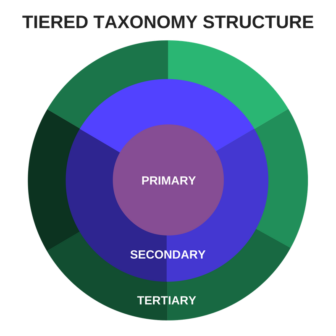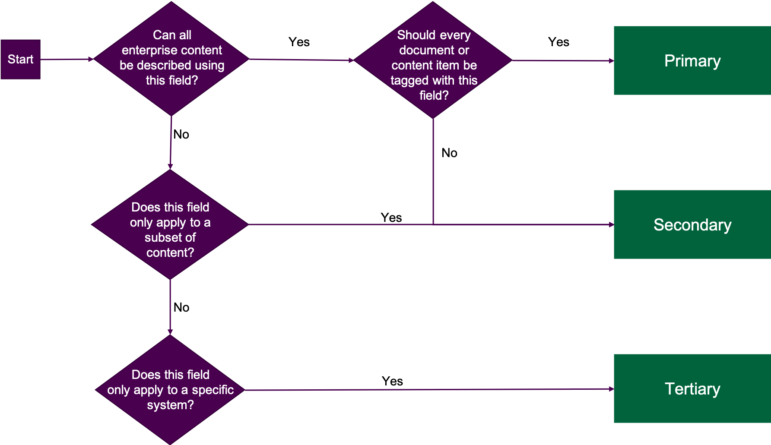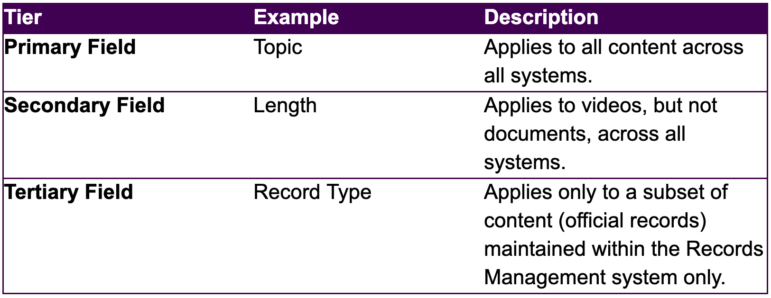 When designing an enterprise taxonomy, the number of possible metadata fields that can be used to describe content can be overwhelming. Depending on the type of content, the size of the organization, and the breadth of that organization’s functions, the overhead involved in applying a large number of metadata fields to describe content can quickly outweigh the value of tagging.
When designing an enterprise taxonomy, the number of possible metadata fields that can be used to describe content can be overwhelming. Depending on the type of content, the size of the organization, and the breadth of that organization’s functions, the overhead involved in applying a large number of metadata fields to describe content can quickly outweigh the value of tagging.
While having multiple metadata fields is reasonable for enterprises that possess a large breadth of varied content, it is important for any organization to identify and place weight on the primary fields. In other words, primary fields are the metadata that can, and should, be applied to all enterprise content. Examples of this might be Topic, Content or Document Type, and Function. A good rule of thumb is to have no more than 5 primary metadata fields that a user is required to enter manually for any given piece of content. This helps content authors to not feel weighed down by overabundant and/or unnecessary metadata fields.
It can be hard to identify whether a metadata field is primary, secondary, or tertiary, and there is truly no single, hard rule. One way to begin determining whether a metadata field might be primary, secondary, or tertiary is to think of the metadata field in terms of scope. Ask yourself the following questions:

These questions may help you to identify, at a high level, which metadata fields might be primary, secondary, or tertiary. However, don’t forget to consider other important factors such as: business use cases, content lifecycle management, whether the fields are consumed by downstream systems, etc. To confirm, or if you are still questioning the field’s tier, here are EK’s basic definitions of primary, secondary, and tertiary fields in terms of metadata:
Primary Metadata Field – A field that can apply to all content across all systems.
Secondary Metadata Field – A field that can apply to a subset of content across all systems.
Tertiary Metadata Field – A system or function-specific field.
Let’s think about examples for each of these types of metadata fields. The table below compares the three tiers of metadata fields and how we can define each:

Once you’ve identified and defined the primary fields for your organization’s content, secondary and tertiary fields can be used to supplement where needed. However, as we mentioned earlier, an overabundance of metadata can overburden users and be as ineffective as too little metadata. In most businesses, finding time for content creation is already difficult. Asking content authors to enter more than 5 or so fields will add additional time to the content creation and tagging process, increasing the likelihood that content will not be tagged correctly or at all. Also, too many metadata fields can narrow results too drastically, actually serving to make it harder for users to find content.
If you still have questions or want some help identifying the optimal primary metadata fields for your content, contact us at info@enterprise-knowledge.com. We’ll apply these best practices and our years of experience to streamline the process for your benefit.
